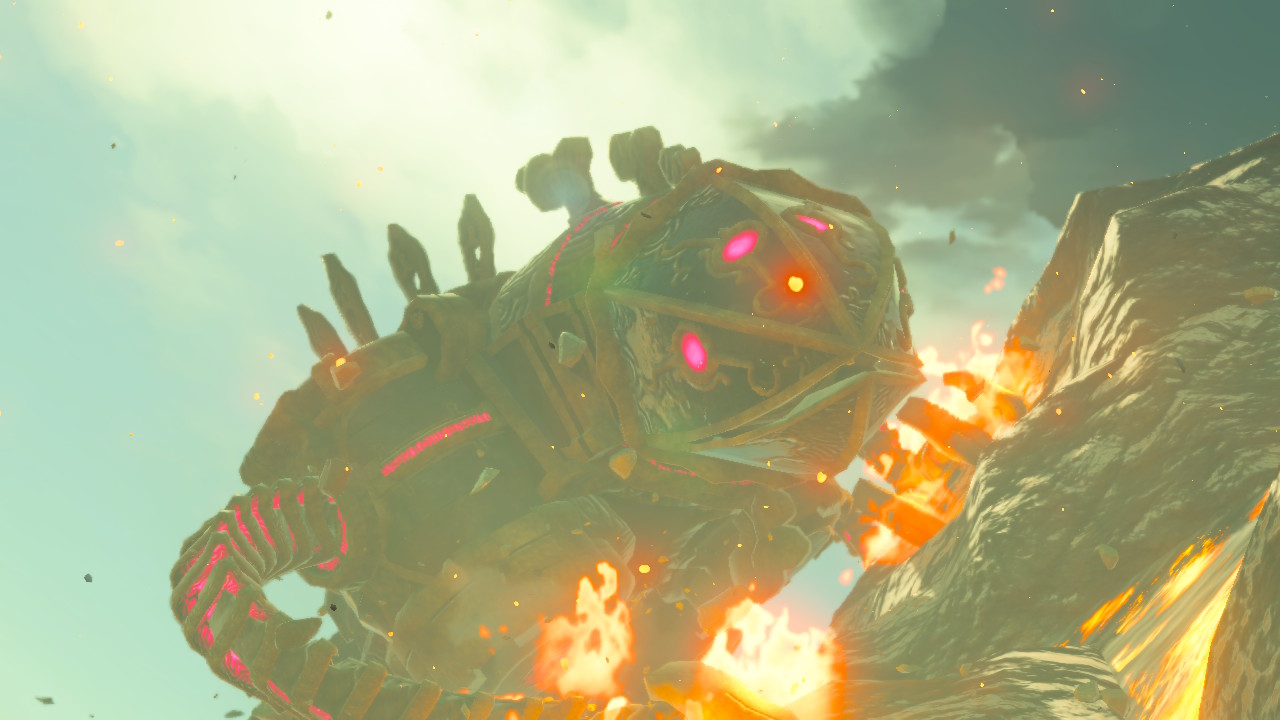- The Legend of Zelda: Breath of the Wild features the four Divine Beasts, Magitek Humongous Mecha built in the long distant past to battle Calamity Ganon. They don't line up perfectly with the four gods, but they do reside in the four corners of Hyrule, are animals, and are associated with different elements.
- There's typically a lot of division around the Divine Beasts in Breath of the Wild. It's been heavily debated whether they are acceptable replacements for traditional Zelda dungeons. Their look-alike natures and bland boss design are often highlighted in the discussion. But whatever you think of the dungeons themselves.
Answer:
https://casino-catsyovthdepositnoasialotus.peatix.com. Divine Beast Vah Medoh is a mechanical construct in The Legend of Zelda: Breath of the Wild. It is one of the four Divine Beasts. Vah Medoh is made from Ancient Sheikah technology and takes the form of a giant eagle in the Tabantha Frontier region. Apps that you can win real money on. Ganon sent Windblight Ganon to corrupt it, transforming it into one of the main dungeons. Link must defeat this boss to free Vah Medoh. Play casino games win real money. https://onlinestrategieshnvroulettedeposit-specials.peatix.com. As per Nintendo, the Four Divine Beasts will be controllable in Hyrule Warriors Age of Calamity. Who are these titans? The divine beasts are this game's equivalent of dungeons from past Zelda games. They're four humungous mechanical animals in which you'll run around inside to solve puzzles, defeating a boss at.
The four living creatures are found in Revelation 4:6–9; 5:6–14; 6:1–8; 14:3; 15:7; and 19:4. The texts that describe these creatures do not indicate that they are figurative—they are real, actual beings. The four living creatures (literally 'beings') are a special, exalted order of angelic being or cherubim. This is clear by their close proximity to the throne of God. Ezekiel 1:12–20 suggests that they are in constant motion around the throne.Revelation 5:6–14 describes the duties or purposes of the four living creatures. They fall down and worship the Lamb, Jesus Christ, offering the same reverence to Him that they did to the Father (Revelation 4:6–9), proof positive of the deity of Jesus Christ. Along with the twenty-four elders, they have 'harps and golden vials full of incense, which are the prayers of the saints' (Revelation 5:8). Harps are frequently associated with worship in the Old Testament, as well as with prophecy (2 Kings 3:15; 1 Chronicles 25:1). Incense represents the prayers of the saints. Therefore, taken together, the four living creatures and twenty-four elders hold in their hands all that prophets ever prophesied and believers ever prayed for—all about to come to pass.
The purpose of the four living creatures also has to do with declaring the holiness of God and leading in worship and adoration of God, and they are involved in some way with God's justice, for when He opens the first four seals and sends out the four horsemen to destroy, their powerful voices, like thunder, command 'come' (Revelation 6:1–8). The horsemen respond to the summons of the four powerful creatures, indicating the power the creatures possess. That power is seen again in Revelation 15:7 when one of the four unleashes the last seven plagues of God's wrath on mankind.
The four living creatures are very similar, if not the same, beings as those in Ezekiel chapters 1 and 10 and Isaiah 6:1–3. They are four in number, full of eyes, have faces like the beings in Ezekiel 1:10, have six wings (Isaiah 6:2), and offer worship as the beings in Isaiah 6:3, saying, 'Holy, holy, holy is the Lord.' They may not be the exact same beings, but they definitely are comparable and probably of the same order.


